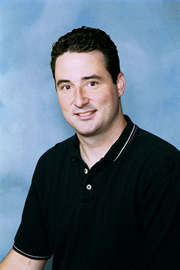
Program Years:
1999–2003
University:
University of Memphis/University of Tennessee, HSC
Field of Study:
Biomedical Engineering
Advisor:
Semahat Demir
Degree(s):
Ph.D. Biomedical Engineering, University of Memphis/University of Tennessee Health Science Center, 2003
M.S. Biomedical Engineering, University of Memphis/UT Health Science Center, 1999
B.A. Physics and Mathematics, St. Louis University, 1995
M.S. Biomedical Engineering, University of Memphis/UT Health Science Center, 1999
B.A. Physics and Mathematics, St. Louis University, 1995
Practicum Experience(s)
Lawrence Livermore National Laboratory (2000)
Practicum Supervisor(s):
Anders
Petersson
Practicum Title:
2D and 3D models of a rabbit sinoatrial node cell using Overture and CVODE.
Current Status
Status:
Senior Research Scientist, Computational Biology and Bioinformatics Group, PNNL
Research Area:
High Performance Computing in Computational Biology
Personal URL:
https://www.pnnl.gov/science/staff/staff_info.asp?staff_num=7051
